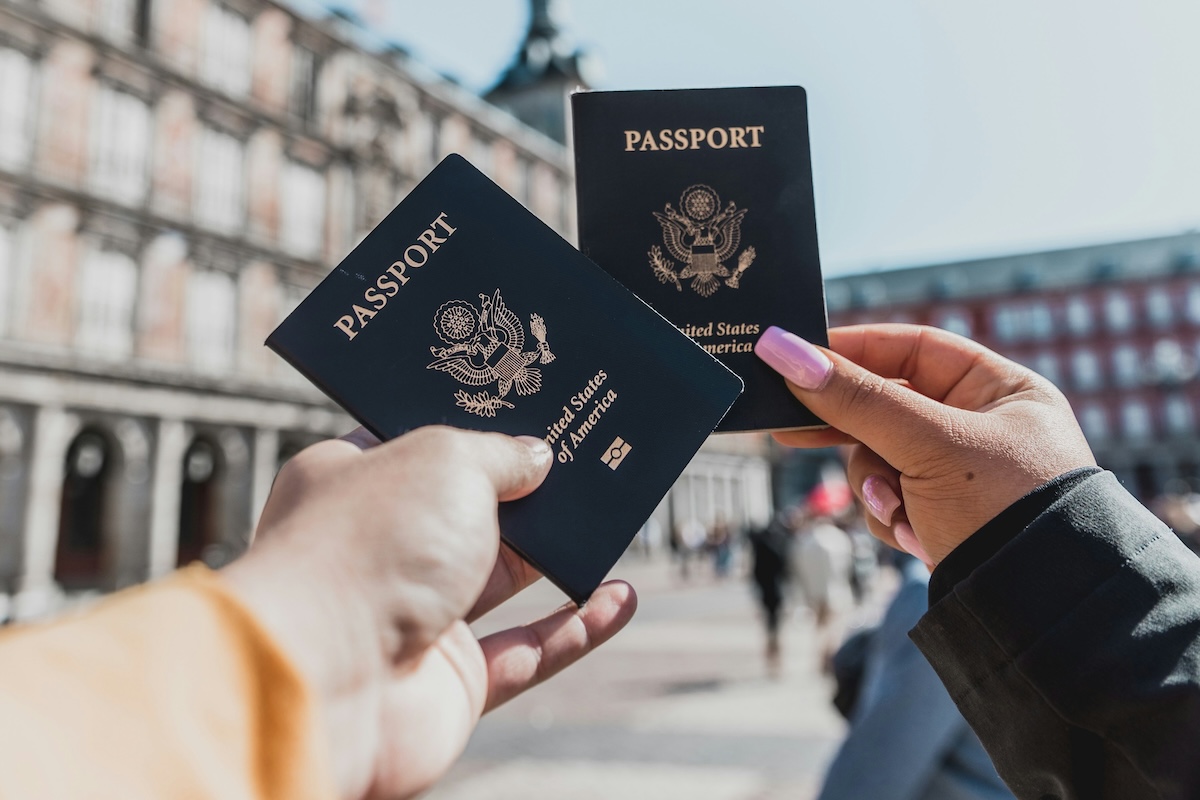By: Robert Hoffman
The arrival of the new year brings with it the promise of heightened tourism, igniting the excitement of future travelers looking forward to their overseas adventures. Amidst the anticipation, it’s vital to remember a crucial aspect of travel: staying informed about travel advisories.
Understanding where to access and how to interpret travel advisories equips you with the foresight to take any necessary precautions for your upcoming vacation. Let’s delve into travel advisories to ensure you’re a well-prepared traveler!
Insightful U.S. Government Travel Advisories to Keep in Mind

Photo by Kelli McClintock on Unsplash
Decoding Beach Safety Flags
There are many beach safety flags, all designated by different colors and color combinations. Red and double red signal caution, advising against entering the water. Yellow flags designate moderate conditions, while green flags signal low hazard and calm conditions. Purple flags warn of dangerous marine life, such as jellyfish or stingrays. Additional factors are also at play when it comes to purple flags; for instance, some coastal towns along the Gulf of Mexico contend with substantial seaweed buildup known as the Sargassum Belt. You may also encounter red over yellow flags, meaning that the area is swimmable and under lifeguard supervision. Black and white flags, also known as quartered flags, signal a “watercraft area” used by those with surfboards and unpowered watercrafts. Knowledge of the different beach safety flags can spare you from an underwhelming beach experience and get you well on your way to your next adventure!
Navigating Temperature Advisories
Whether you’re planning a rustic camping expedition or a cozy glamping retreat, temperature advisories are your trusted guide. They can help you pack the perfect outfits and make snug accommodation choices. Thanks to these advisories, you’ll be ready to conquer the trails—rain or shine.
Handling Wildlife Encounters
Nature’s beauty and majesty abound, but they come with their own set of friends—or foes. Wildlife advisories hold the key to harmonious coexistence as you venture into the wild at home or abroad. From the grandeur of Western landscapes, where encounters with brown bears and snakes might surprise you, to the enchanting shores of the Mediterranean, where jellyfish may show up, these advisories equip you with the armor of knowledge. With bear spray in hand and sturdy boots on your feet, you’re all set to confidently embrace the untamed world.
Essential International Travel Alerts and Advisories to Keep in Mind

Photo by Dave Hoefler on Unsplash
Gauging Health Risks
The world is your oyster, and you’re ready to explore its diverse wonders. Health advisories step in as your compassionate guides, ensuring you’re well-prepared for the journey ahead. Although the COVID-19 pandemic is over, health-related travel advisories still deserve attention. Staying informed about health advisories offers ample time to secure required vaccinations or even reconsider travel plans to specific areas.
Keep in mind that countries located below the equator, particularly in Africa, frequently experience malaria outbreaks. Being well-versed in current health advisories will always be a good idea, especially if you intend to travel to such regions.
Acknowledging Crime Risks
As you embark on your grand adventure, a thorough understanding of crime risks ensures your safety and serenity. Knowing is half the battle when you’re facing pickpocketing in bustling European cities or more serious concerns in specific areas. Armed with awareness, you can navigate with confidence, leaving worries behind and focusing on making unforgettable memories.
Understanding Political Stability
Political unrest stemming from factors like fascism, humanitarian protests, or post-election outcomes can impact travel. Staying updated on current events helps you avoid potentially precarious travel scenarios.
For instance, France has been experiencing ongoing political disturbances resulting from a government decision and triggering protests. This has led to a “medium risk” travel advisory for the country, underlining the need for caution among potential visitors until the international travel advisory is revised.
Navigating Natural Disasters
Awareness of potential travel advisories during and after storm seasons will be important as well. South Asia witnesses annual monsoon seasons, and countries below the equator are prone to hurricanes. By tuning into potential travel advisories, you become the master of timing, ensuring your journey aligns with the elements.
Staying Informed about Travel Advisories: A Proactive Approach

Photo by Daria Nepriakhina 🇺🇦 on Unsplash
- Consult the U.S. Department of State’s travel advisories. Visit the official website and explore the “travel advisories” section or search for your intended country. The Department of State assigns travel advisory levels ranging from Level 1: Exercise Normal Precautions to Level 4: Do Not Travel.
- Delve into the details. Click on a specific country’s advisory to access comprehensive insights, including the rationale behind the advisory, safety concerns, crime rates, political stability, health risks, and other pertinent factors influencing your travel plans.
- Subscribe to alerts. Enroll in the Smart Traveler Enrollment Program offered by the U.S. Department of State. This free service provides alerts and updates about your destination, including changes in travel advisory status and other critical information.
- Seek embassy or consulate guidance. For specific concerns or additional information, reach out to the U.S. embassy or consulate in your destination country. They can offer the latest updates on local conditions and potential risks.
- Rely on reliable sources. Trustworthy sources for updated travel advisories include your country’s official website or reputable international sources. Websites with .gov (U.S.), .de (Denmark), or .it (Italy) domains are credible. Reputable premium publications and major news outlets have rigorous vetting processes for safety-related topics.
Note: Consider travel insurance. It’s always advisable to have travel insurance that covers potential risks and unexpected events during your trip. Check with your insurance provider to ensure you have adequate coverage for your destination, including any risks highlighted in the travel advisory.
Equipped with comprehensive information, you can make sure your travel experience is poised to be not only enjoyable but also secure. Dedicate some time to researching travel advisories before your next vacation—it’s an investment that promises peace of mind and rewarding memories!
About the Author
 Robert Hoffman is the founder and CEO of Xchange of America, an online currency exchange platform that ranks as the top foreign currency provider in the U.S. Robert’s passion is making online currency as easy as possible for the everyday traveler, and his mantra is to provide an amazing customer experience with the highest level of convenience possible to drive repeat business. Xchange of America was founded in 2007 and is headquartered in Stuart, Florida.
Robert Hoffman is the founder and CEO of Xchange of America, an online currency exchange platform that ranks as the top foreign currency provider in the U.S. Robert’s passion is making online currency as easy as possible for the everyday traveler, and his mantra is to provide an amazing customer experience with the highest level of convenience possible to drive repeat business. Xchange of America was founded in 2007 and is headquartered in Stuart, Florida.
Featured image by Spencer Davis on Unsplash
Frayed Passport is a participant in the Amazon Associates Program, an affiliate advertising program designed to provide a means for sites to earn advertising fees by advertising and linking to Amazon.com. We also may share links to other affiliates and sponsors in articles across our website. If you have questions or concerns, please contact us.

